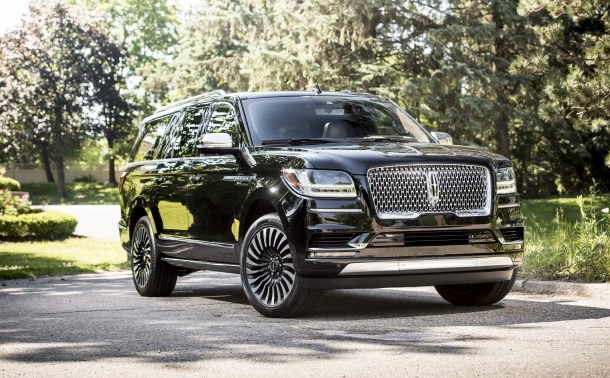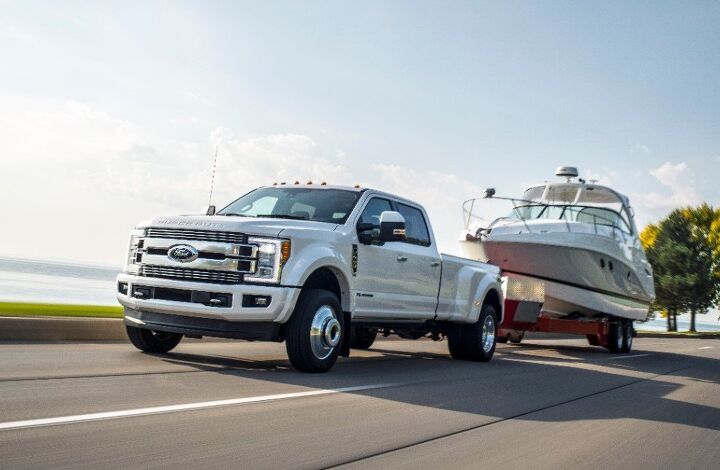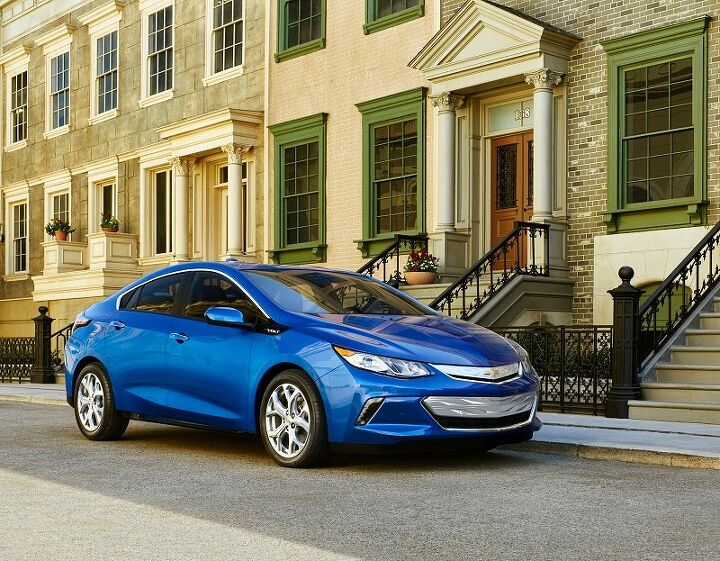#environment
Battle Lines Are Being Drawn in America's Gas War
Ford Motor Co, Honda Motor Co, BMW Group and Volkswagen AG announced a voluntary deal with California in July — drawing a line in the sand for who they’ll be supporting in the fueling fracas taking place between the Golden State and White House. Meanwhile, the Trump administration’s rollback proposal — which intends on freezing automotive emission standards at 2020 levels through 2026 — saw no such support. But the cavalry seems to have finally arrived after sitting on the sidelines during the battle’s opening maneuvers.
General Motors, Fiat Chrysler Automobiles, Toyota, Mazda, Nissan, Kia, and Subaru all sided against California in a filing with a U.S. appeals court from Monday night. While they’re not setting any economy targets, they are collectively firm on the issue of the state’s ability to self regulate. A large portion of the industry wants a single national standard, not individual states setting their own benchmarks while they attempt to catch up with product.
A Lot of People Were Protesting Cars in Germany Over the Weekend, but SUVs Received Special Attention
Thousands of people amassed in Germany over the weekend to protest the automotive industry. Ground Zero was in Frankfurt, with an estimated 15,000-25,000 people marching past the Frankfurt Motor Show holding signs condemning the internal combustion motor and promoting environmental awareness. Dozens of people also made it onto the trade show to demand the event be shut down or reformatted to focus entirely on eco-friendly transportation.
Sport-utility vehicles and crossovers were also a focal point of activist ire. Many called for their banishment from German cities after four pedestrians, including a three-year-old boy, were fatally struck by a Porsche Macan earlier this month in Berlin. However, the segment’s slightly higher dependance upon fuel was also a sore spot for many activists.
“Such tank-like cars do not belong in cities,” Stephan von Dassel, Green politician, bicycle enthusiast, and mayor of Berlin’s Mitte district, tweeted in German. “They are ‘climate killers’, even without accidents, every driving error becomes a life-threatening danger for innocent people.”
Two Tribes: When a Suburban Crossover Owner Butts Heads With Urban/Environmental Advocates, Who Wins?
That headline is only the second 1980s musical reference of the day, which might point to a lack of sleep on the part of your author. Blame a raging sinus infection, or perhaps exposure to a heavy Twitter conversation that began yesterday and continues into today.
I’m a passive observer in all of this, as Twitter’s toxicity makes Love Canal look like a lush Koi pond. Engage at your peril. And yet an element of the back-and-forth that rages online in the center of the Canadian universe (Toronto) is something frequently mentioned in far calmer TTAC chatroom discussions.
How much car is too much car?
And, does it matter if you buy to cover all the bases?
MPG Update: We're Getting Better, Just Not Quickly Enough to Please the Eco Crowd
Chances are, the vehicle you drove 10 or 20 years ago returned worse fuel economy than the one sitting in your driveway today. Significantly worse fuel economy.
While this may not be true if you went from strapped Corolla owner to affluent Navigator enthusiast over the past decade or so, it’s true for the average vehicle sold today. In a much-cited report on fleet fuel economy and emissions, the Environmental Protection Agency claims new vehicles hit a record in 2017, with a significant MPG bump looking likely for 2018.
QOTD: Minding Your Mileage?
Without getting deep into the emotional weeds of a contentious scientific debate, one which many would argue we’re not even allowed to have, let’s instead speak in broader terms. Emissions are bad. Always were. They’ll get you in trouble with the EPA and force you to promise fleets of electric cars while funding ads featuring your competitors. They blanket China in orange gloom to this day and once nearly suffocated an entire Pennsylvania town.
The true harmfulness of these emissions, of course, depends on your own personal views — even more so these days. In the past two decades, possibly because of progress on the pollution front, the climate-altering ingredients of emissions (methane, carbon dioxide) quickly superseded the direct health impacts of airborne pollutants like nitrogen oxide, hydrogen fluoride, and sulfur dioxide in the minds of many North American citizens and policymakers. Smog? You can see that. Was that tornado or flood a natural occurrence or did it have “help”? That’s less tangible, more opaque. Easy to ignore.
Still, the effect of this switch in green priorities on discourse surrounding the automobile (and ownership thereof) remains the same. We’re often asked to choose sides.
GM Gets EPA Nod for Building the Most Greenwashed Large SUVs on the Market
The Texas plant producing General Motors’ body-on-frame SUVs is clean and green, even if the vehicles it builds are anything but Prius-like.
In August, the 43 turbines of Southern Power’s 148 MW Cactus Flats Wind Facility became operational in Concho County, Texas. GM, along with General Mills (the tastier GM) both have contracts to purchase power from the facility — in GM’s case, some 50 MW of it per year. That means it can now claim its Arlington, Texas assembly plant is 100 percent powered by renewable energy. The Environmental Protection Agency just placed GM at No. 76 on its list of the country’s largest green power users.
It’s amazing the kind of tree-hugging press one can get for a factory that essentially builds dinosaurs.
Volkswagen's Settlement Cash Isn't Spreading Sunshine and Rainbows in Texas
Sprinkle a bag of cash on an area and what happens? The highest authority in said area collects it all and then decides how to dole it out. And, just like at a children’s birthday party, the squabbling soon begins — usually sparked by one guest complaining that another got a larger slice of cake.
That’s what’s currently happening in Texas, where a city with dirtier air claims it’s being short-changed after seeing the windfall headed to a smaller, cleaner city. No fair!
Blue Oval Vs Big Green: Environmental Ad Campaign Lays Into Ford … Again
The builder of the world’s best-selling vehicle, which just happens to be a large truck, finds itself in the crosshairs of yet another environmental ad campaign. Like past campaigns against the automaker, the coalition of four leading environmental groups claim Ford’s commitment to the environment pales in comparison to its thirst for profits.
Oh, and Ford Motor Company might as well change the name on its logo to “Trump.”
That’s what readers of The Detroit News and Detroit Free Press read on Saturday morning, after the Sierra Club (which is not a British Ford fan group, to be clear), Greenpeace, Safe Climate Campaign, and Public Citizen ran giant ads in both newspapers slamming the automaker for backing the Trump administration’s planned rollback of fuel economy standards.
Whoa, whoa, whoa, take it easy, Ford responded.
New Vehicles Are More Powerful and Efficient Than Ever, but the Greenest Automaker Only Sells Gas Models: Study
Every year, the Environmental Protection Agency tabulates all available data for new vehicles sold in the United States and prints colorful graphs showing the country’s progress — or in some cases, regression — in key areas of autodom. Areas like average fuel economy, vehicle weight, horsepower, and emissions.
It’s a tradition dating back to the heady, wide-lapelled days of 1975.
The most recent report on light-duty vehicles in the U.S. shows definite, albeit incremental, progress towards many environmental goals. While the auto landscape may not be advancing at the rate preferred by many environmentalists, urbanists, and the Tesla fan base, there’s cause for celebration within the report’s pages. There’s also a special prize in there reserved just for Mazda.
With the EV Tax Credit Threatened, Where Do Green Car Sales Stand Today?
General Motors doesn’t want it gone, highly indebted Tesla certainly doesn’t want it gone, but House and Senate Republicans would love to see the $7,500 EV tax credit die a quick death. In a sweeping tax proposal introduced last week, the credit’s nowhere to be seen.
The problem, according to many green car and auto industry proponents, is that the U.S. EV market would quickly join the tax credit in going belly-up. There’s a movement afoot to save the incentive (and the fledgling market along with it).
Assuming the credit goes the way of disco (and state-level incentives aside), electric cars would be forced to stand on their own environmental merit. It’s something free-market capitalists would love to see, but would it really spell doom for the segment? That depends on who you ask. But it might be helpful to take a look at where the segment stands right now.
No Fixed Abode: To Cool Off the Planet, Just Add Hot Hatches
As I write this, one of my favorite race tracks is entirely underwater. Many years ago, I wrote for a Houston-based automotive website and we used MSR Houston as a testing facility. It was also the track where I nervously watched my little brother start his first wheel-to-wheel race back in 2013. Now the start/finish flag station looks out over a mirror-finished hurricane lake stretching to the horizon.
Every time something like this happens in the United States it tends to get people talking about climate change and what can be done to slow or halt the process. Predictably, the privately-owned automobile comes in for a fair share — maybe more than a fair share — of criticism as a result. I couldn’t tell you if the internal combustion engine actually makes a difference to the climate, and I suspect the facts are less clear than they are made out to be, but it doesn’t matter. Enough people believe in anthropogenic global warming (AGW) for public policy to be affected as a result. Nobody in Salem was really a witch but that little fact didn’t save anybody from being burned at the stake. The same is true when it comes to climate change and the automobile.
Sports cars and performance cars are a favorite target of the save-the-earth crowd, of course, but I think I can make the argument that increased availability of fast cars in general — and “hot hatches” in particular — can actually make a positive impact on carbon-dioxide emissions. Are you skeptical? Read on, my friend.
EPA Says a Chevrolet Volt Is Barely Greener Than a Toyota Prius
If the Chevy Volt and Toyota Prius are presented as solutions to cut greenhouse gas emissions, it may be a toss-up as to which one wins.
This is according to the U.S. Environmental Protection Agency’s fueleconomy.gov website, which lets consumers determine tailpipe plus upstream emission. The difference on a nationally averaged basis is negligible, while regional variations see one car or the other pulling ahead.
Stop Being So Mean to Diesels, Pleads Jaguar Land Rover Boss
Ralf Speth isn’t having it. Across Europe governments are cracking down on the use of diesel vehicles in a bid to lower air pollution, especially in the Jaguar Land Rover CEO’s own country. London has announced plans to levy stiff charges on anyone driving a diesel-powered vehicle through central areas of the capital starting in early 2019, adding fuel to the anti-diesel fire. Paris, Berlin and Athens also plan to ban the technology.
With compression ignition still a significant part of the automaker’s engine lineup — both in Europe and North America — Speth recently defended the technology’s importance in a finger-pointing spiel. The world needs diesel, he claimed, and the media (and Volkswagen) haven’t done anything to help the situation.
Tesla Planning to Double the Number of Supercharger Stations
With the “affordable” Tesla Model 3 on its way to an anticipated July production date, the company has promised to double the number of fast-charge plug-in points to feed the company’s growing fleet.
The electric automaker has already installed over 5,400 Supercharger outlets and about 9,000 lower-voltage Destination Charging connectors at various locations around the globe. In North America, Tesla promises a 150-percent increase in the number of charging points. However, don’t expect many of those stations to look like the photo above.
Take This Park and Wire It: BMW Wants to Get Your EV to the Hills
It’s looking like some sites just might not be feasible. Still, BMW, in partnership with the National Park Foundation, National Park Service and Department of Energy, has hatched a plan to lure electric vehicles out of their safe urban confines and into the wilderness.
It’s starting in New Jersey, about 12 miles west of New York City. (Hey, you have to begin somewhere.)
While the first EV charging station installed by the group can be found, fittingly, at Thomas Edison’s Glenmont laboratory in Llewellyn Park, NJ, plans are afoot to add up to 100 stations in or near national parks in the near future.






























Recent Comments